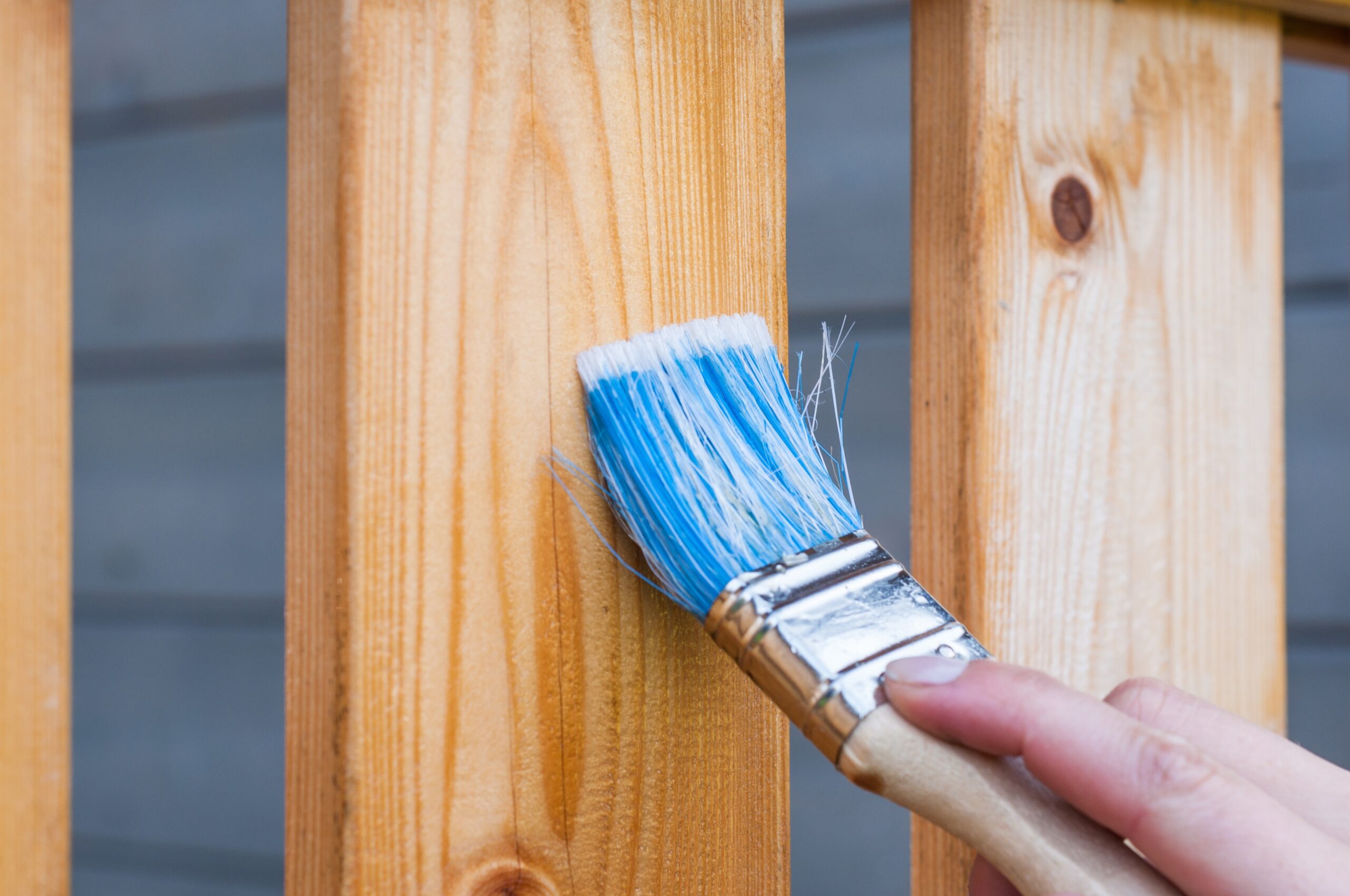A necessary effort
For many newcomers to home maintenance the task of painting a fence can seem like an impossible endeavor.
Whether it is a brand-new fence or an old fence which simply requires essential maintenance. The situation is made significantly worse when such a person doesn’t have the slightest idea what the process involves or even where to start.
Fortunately, you are not the first one to encounter a challenge such as this and this is why there is a lot of valuable information which can be obtained from friends, family, colleagues and also from libraries and the Internet.
When starting out it is important to fully understand the vital aspect of preparation.
Every do-it-yourself project can only be successfully completed if there was sufficient attention to detail during the preparation period.
Depending on the actual condition of the fence, the preparation process can sometimes end up to be the largest part of the entire project.
Nevertheless, this part of the project is extremely important in order to ensure that the ultimate result will be satisfactory and pleasing to the eye.
Preparation will make a difference when it comes to the longevity of your fence and when properly done it will also ensure optimal protection of that fence.
Preparing the immediate vicinity
Especially on older properties it can happen that there are many shrubs and other growth in the vicinity of the fence which has to be painted.
Failure to deal with these things will make it difficult to do the job effectively.
This is why it is important to clear the entire area around the fence in order to allow unobstructed access to that fence.
When you know that necessary maintenance needs to be done on your fence then it is always best to start with all of these preparatory tasks well in advance since it will remove a lot of the pressure which can sometimes be associated with important maintenance.
It may also be necessary to do this work in the rainy season and it may be necessary to do this job while there is an excellent weather forecast.
At that point there may not be time to prepare the area.
Cleaning
The next step will be to thoroughly clean that fence simply by washing it down preferably with warm soapy water and also use a heavy-duty scrub brush so that you can ensure that all of the loose dirt is removed from your fence.
But this is not the end yet because for best results it is necessary to use of a scraper in order to ensure that all of the loose paint which is clinging to your fence is completely removed.
You also need to use sandpaper to deal with those places where the old paint has formed bubbles because simply painting over these defects will not result in the best result as far as your fence is concerned.
These initial steps have to be done properly before moving on to the application of your primer.
When the preparation has been completed it is best to allow your fence to dry for several days to ensure that absolutely no moisture remains which could possibly interfere with the proper adherence of the paint to the surface of your fence.
The actual painting
Only when you’re certain that you have put your best effort into the preparation of that fence should you move on to the actual painting of your fence.
Let’s take one more moment to talk about the wide variety of stain and paint options which is available when it comes to the maintenance of your fence.
You should do everything possible to ensure that you have chosen the best products for your particular purposes.
Certain products will be best on certain types of fences and this has to be kept in mind in order to ensure a satisfactory end result.
Nevertheless, the majority of wood fences can be successfully treated with a variety of sealers, stain and paint and all of these things is freely available from most hardware stores.
If everything has been done correctly than a person should mostly be able to paint the entire fence quickly and easily.
When it comes to a fence standing in wind and weather it is important to ensure that you’re using exterior paint.
This should not be difficult because there are today a wide range of exterior paints available from a number of manufacturers.
Avoid damage to the environment and particularly to plant life in the vicinity of your fence.
This is why it may be best to cover plants to protect them against accidental splash. The same thing should be done for other surfaces such as tiles or paving which does not require maintenance treatment at this time.
Also pay attention to locks and hinges and they also should be covered in order to ensure that you do not accidentally get some paint on them.
Other useful considerations
When you start painting it is best to focus on grooves and cracks that are visible in your fence. Fill these areas with paint or some other kind of filer before you start to seriously cover all of your fence with paint.
You will most likely be moving on to the use of a roller or some similar tool.
It is also possible to use a compressor and spray gun when it comes to large sections of fence which has to be covered.
Even though the cost of such an operation will be slightly higher this might turn out to be an option which can provide you with an excellent result.
When the last part of your fence has been covered with paint this does not mean that the job is necessarily completed.
The next step will be to take all of the roller sleeves which has been used and dispose of them in a responsible manner.
You should also clean all of the equipment which has been used and dispose of absolutely anything which could present an unnecessary environmental hazard.
Only then can you step back with confidence and cast a critical eye over the work done.


Comments are closed.